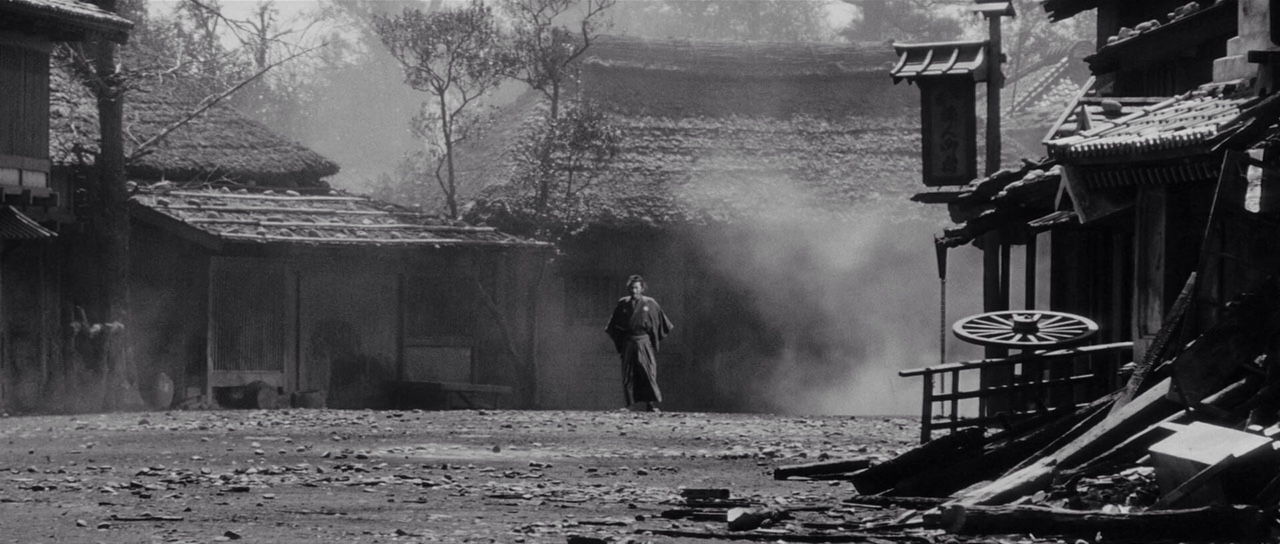
There is nothing new under the sun and little that has ever been completely new in the cinematic world, either. The widescreen era in the motion picture world began in the early 1950s with the emergence of Cinerama and Cinemascope. These processes were introduced in an effort to lure newly converted TV fans back to the theaters by virtue of changing the shape of the motion picture screen from the long used “Academy Format”, which used a ratio of 4:3 to one of 2:35 to 1 or even wider.
In truth, this type of process had been in existence since the late silent era and Fox Films and a few independent producers had tried to introduce it into American filmmaking in the early 1930s. However, first depression then global world events prevented the introduction of anything more that was new and elaborate in the world of motion picture theaters for some two decades.
Then came television and the threat it carried to the movie world. In the effort to lure the audiences back, the film companies sought to give the public whatever TV couldn’t offer.
Widescreen was certainly something different from TV but so, largely, was something else: color. Though there were experimental color broadcasts from the late 1940s, color on TV wouldn’t come into practical usage until the mid-1960s. Color had been a part of the movie world since the silent era of the 1920s, though not perfected until 1935.
However, it was an expensive process and, though bright and radiant, it had the drawback of not being able to achieve the depth of focus and intensity of black and white. Thus, it was largely consigned to musicals, comedies, and period pieces. When widescreen came in, which was a bit costly as well, the film studios largely were of a mind that the high price meant that all widescreen films would also be shot in color in order to increase potential revenue.
The problem with this is that some films needed, artistically, to be shot in black and white. Some subjects were far better served by monochrome and the depth of focus and use of light and shadow essential to telling the story correctly. At first it was a hard sell on the part of the director to make black and white filming possible.
Fox studio head Darryl Zanuck had gone so far as to declare black and white dead (ironically, he would violate this more than once himself when he went into independent production a few years later). Thankfully, black and white was allowed to be used a number of times until the color era was firmly established in 1968 (the last year the Motion Picture Academy would give out awards in specific black and white craft categories was 1967).
Europe and Asia were a bit more lenient in allowing black and white but film makers faced a color challenge there as well. The sad irony is that black and white anamorphic films are among the most aesthetically pleasing of all films, containing both great breath and depth. Following are some fine examples of this. (Note: non-ananamorphic widescreen black and white films such as Touch of Evil, Night of the Hunter, and Psycho are not covered in this article.)
1. The Big Trail (1930)
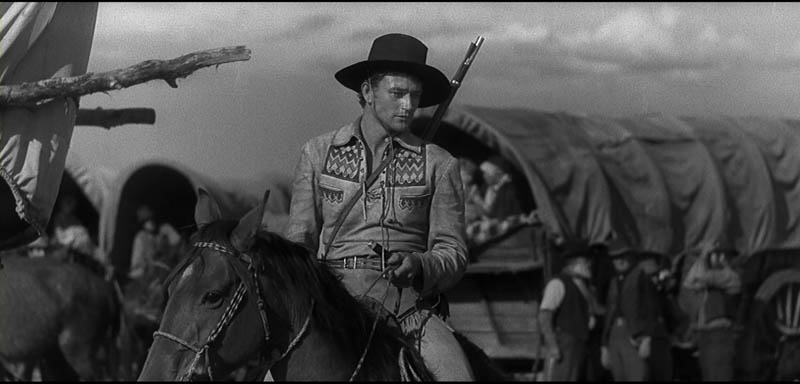
Twentieth Century Fox truly inaugurated the wide screen era with the introduction of Cinemascope in 1953. However, the studio, then Fox Films, had tried to bring this new epoch into being in the late 1920s and very early 30s with a process (based on a French created system) called Grandeur. Sad to say, thanks to the Great Depression worldwide and ominous political rumblings in Europe and Asia, the timing was all wrong for another big innovation coming on heels of sound.
Most of these efforts are now lost but one has survived to find a measure of the fame which eluded it in an aborted original run. Front rank director Raoul Walsh had directed the first talkie western, 1929’s In Old Arizona, and was anxious to use the wide screen to capture scenic western landscapes and tell a rousing story of frontier life. The story was one concerning the western expansion of the US in the late 19th century.
The film was beautifully shot, created great, authentic in feeling period atmosphere, and the action scenes were great. Fox also shot a regular screen version but didn’t much push its release. Not enough theaters were equipped to show the wide version and the film ended up a flop. Despite damage to the soundtrack, the film has been restored in recent years and looks quite good to modern eyes.
2. The Elephant Man (1981)
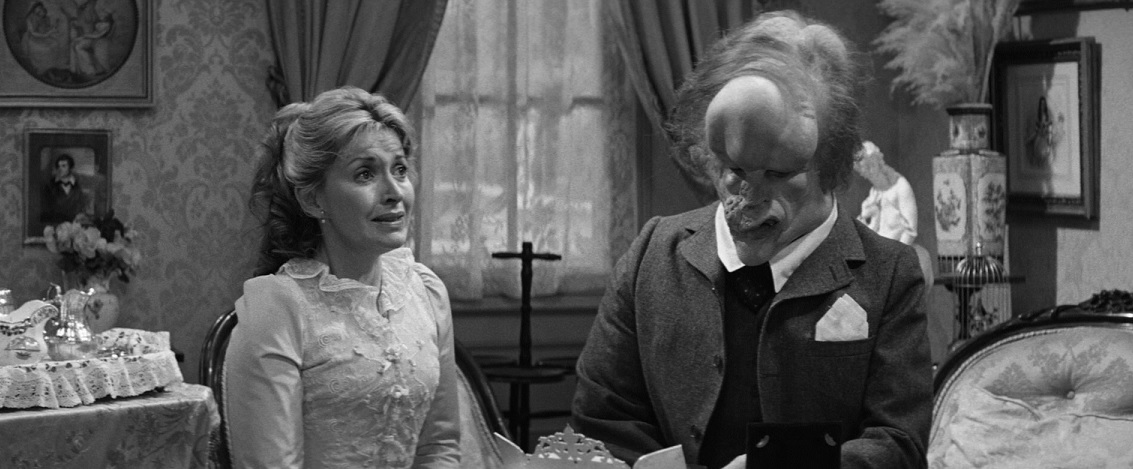
Director-writer David Lynch is perhaps the foremost surrealist working in motion pictures in the modern era. He made his original mark with two black and white productions, the indie classic Eraserhead and his first mainstream film, The Elephant Man. Science has determined that most people dream in black and white. This suits the subjects of these two films, which resemble waking dreams.
The Elephant Man is based on the tragic story of Joseph Merrick, a British man who lived during the Victorian era in England who existed as a freak show attraction due to severe deformities which warped virtually his whole body. The story attached to him was that his mother, living in India, had been attacked by an elephant during pregnancy. Mercifully, a compassionate doctor rescued him and gave him a home within a London hospital. This story inspired a hit play which this film is emphatically not based upon.
This might have been considered a rip off production but a brilliant new director which the help of noted cinematographer Freddie Francis and fine set and costume design created a true work of art in its own right. Lynch shows a marked compassion for the main character (renamed John Merrick here) and the film largely plays like a fantasia exploring Merrick’s dreams and feelings.
The layered widescreen monochromatic design of the film takes the viewer into a different world, Lynchland, and the cinema has never been the same.
3. The Innocents (1961)
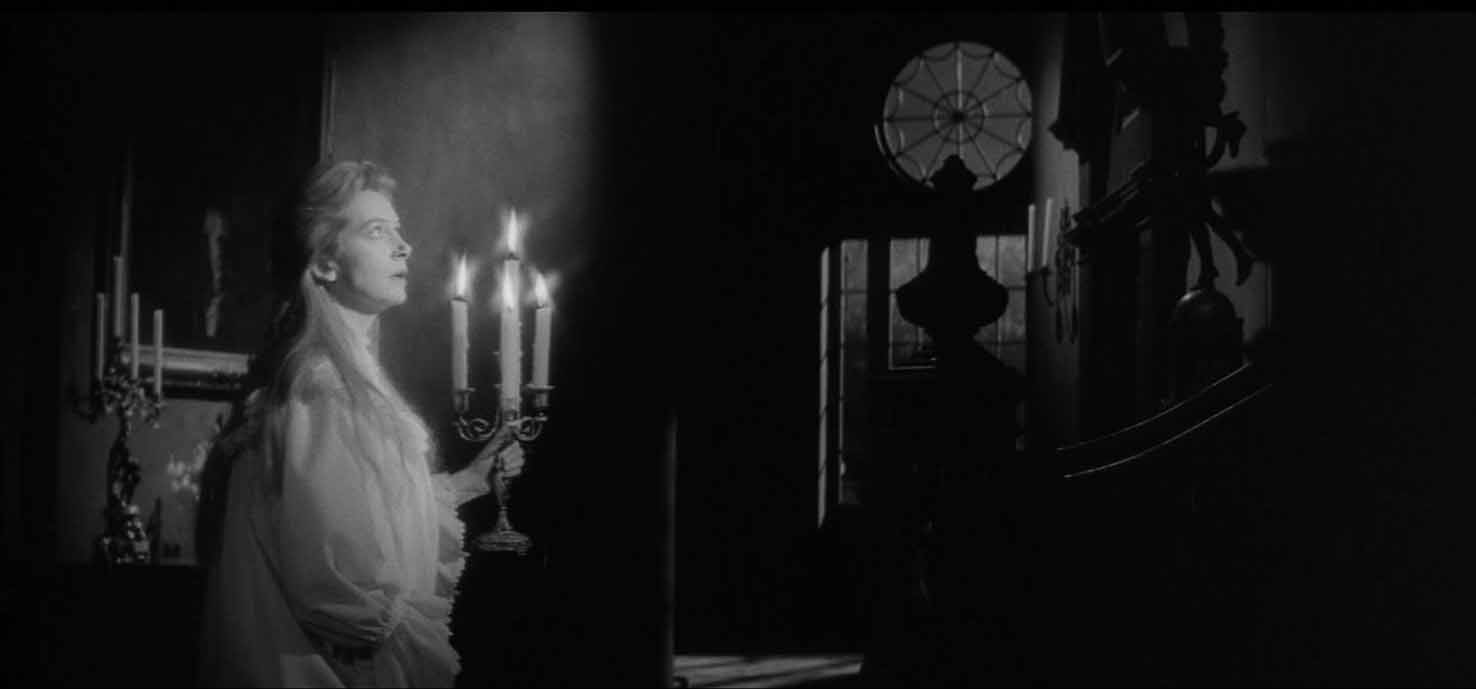
Any high schooler and/or fan of macabre fiction knows the celebrated writer Henry James’ short novel, The Turn of the Screw. The novel tells the story of a young 19th century English governess who believes her deceased predecessor and also the deceased handyman of the isolated estate where she teaches an orphaned brother and sister have returned from the dead to haunt. She also believes that the two had a debased relationship and had infected the children with evil. The conceit of the novel is whether the spirits are real or the products of the woman’s neurotic imagines.
Classic era Hollywood never touched it but it came to Broadway in a hit adaptation by Truman Capote and William Archibald entitled The Innocents. Then Hollywood paid attention. This was a stroke of genius/luck since this story cries out for black and white and widescreen and came about at about the last moment the two would be easily joined. Much of the action takes place in broad daylight and in very normal places (though the superbly staged climax uses a shadowy courtyard at night).
Freddie Francis comes through yet again with a masterful job under the direction of Jack Clayton. Even in the brightest sunshine there is a shadowy feeling of gloom and unease hanging over the proceedings. Even more important, there is a depth essential to the story.
The spectre of the handyman, whose picture the governess has seen, is often seen in the middle distance while the unseen deceased governess is always seen in the far background, both ominously still and silent. This film has always been a favorite of classic horror fans and small wonder since it is so perfectly realized.
4. Compulsion (1959)
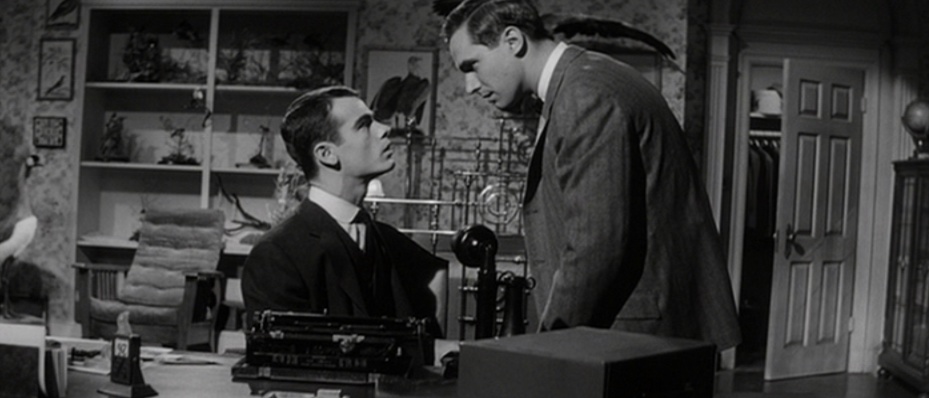
For someone who infamously declared black and white dead in a Cinemascope world, Darryl Zanuck backpedaled very quickly when he stepped down as studio chief and went into production for himself (albeit releasing through his longtime studio, Fox). His first independent release was this stylish crime study directed by Richard Fleisher, who is now well regarded for his true crime pictures.
Though taken from a book by Meyer Levin labeled a novel and the author’s stage adaptation of it, the plot was actually taken from the infamous case of 1920’s “thrill killers” Leopole and Loeb and the fictional names fooled no one (certainly not Loeb, the sole surviving member of the pair, who was released from prison just in time to sue the makers of this film, though he was paid off.) The pair had been gifted and highly intelligent students from two of Chicago’s wealthiest families.
They were also gay lovers with a most unhealthy dominant-submissive relationship and a really unhealthy thing for philosopher Fredric Nietsche and his theory of the superman. So they decided to commit a “perfect” crime (heinously, killing an innocent young boy) to show that they could get away with it. Well, they were better students than murderers since one dropped his ultra costly, easily traced glasses at the crime scene and they were easily caught.
It took all of famed defense attorney Clarence Darrow’s expertise to save them from hanging. Levin had gone to school with one of them and tried to get away with telling their story incognito. Many have called the film cold and detached but that’s a sensible choice since the murder takes place off screen shortly after the action commences and there little to do but wait for the police to catch up the pair and send them to trial.
The monochromatic widescreen helps to set the period perfectly and the director’s eye for composition is astute as he often introduces a deliberately askew element into the posh settings, reflecting the warped mind and relationship of the main characters. Wide screen was also correct since it gives the proceedings a needed modern feel (the case was one of the first major trails to hinge on psychiatric evaluation). The monochromatic element adds a documentary-like element and casts a coolness over the picture which prevents it from ever becoming lurid. Compulsion comes off well all around.
5. Manhattan (1979)
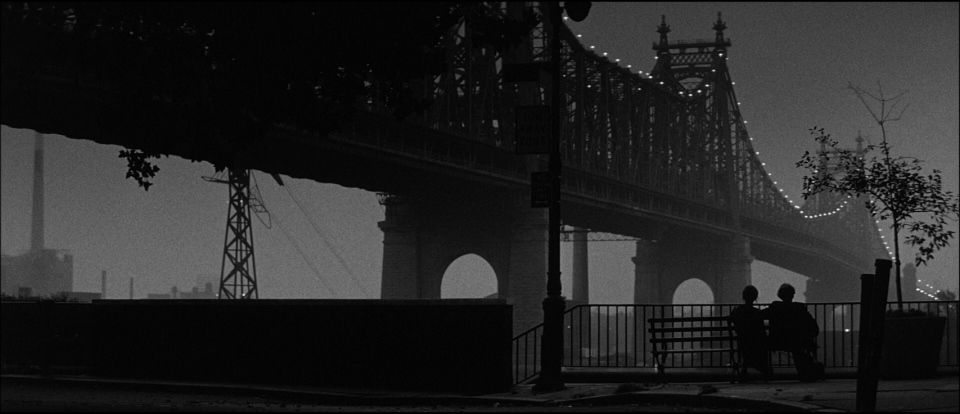
Woody Allen’s early films were rather ragtag collections of jokes, some good, some not which weren’t too concerned with style, sophistication, or technique (the early, “funny”, ones to a certain segment). When some success and lots of acclaim were showered on Annie Hall, Allen’s technique radically changed and he started making films more for the ages. One of his very best is his magnum opus in black and white (which he still uses from time to time) and widescreen(which he rarely uses).
This is Manhattan, yet another story of an ultra neurotic writer (who else?) who is nevertheless the most talented around, not attractive yet landing one beautiful and high toned woman after another (and so young, too!), all against the background of the greatest place on earth, the Manhattan borough of New York City. OK, he told it many times but it was newish in 1979 and he never really told it better.
The film is the triumph of right touches and many critics commented that black and white was a perfect choice for a city nearly devoid of color. The widescreen also allows the great cinematographer Gordon Willis to create one stunning Manhattan vista after another with light and shadow (the opening montage most notably). It must be noted that New York was still having a rough time during that era but who would know from this elegant film?
6. Kuroneko (1968)
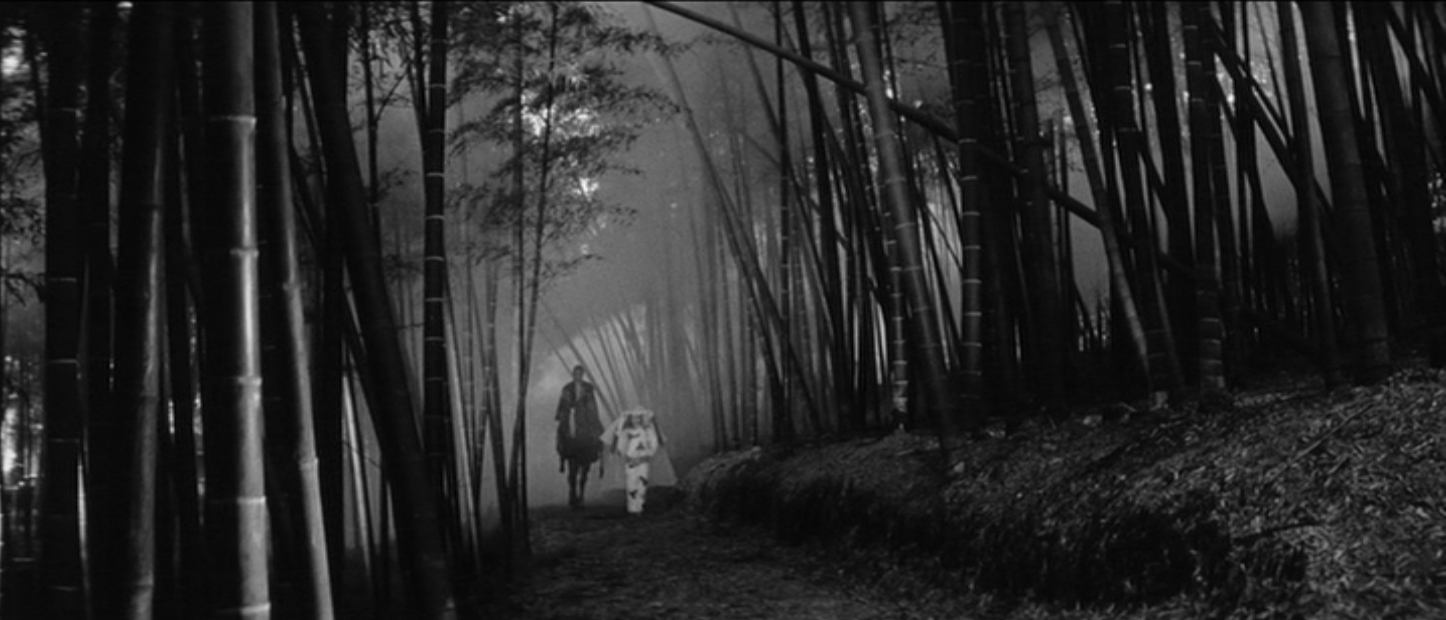
Recent film scholarship has happily unearthed many gems from countries which have long been ignored by US and Europe based critics. Though Japan hasn’t been majorly neglected, recent years have seen many previously little seen films from that country being introduced into the mainstream. A stunning new discovery is the supernatural picture Kuroneko, the title of which can be translated as “white cat in a bamboo, or white, forest”.
This tale of loss and revenge could only come from a country which takes the horror genre seriously and the picture makes it plain in its sharply detailed images, framed in various gradations of light and shade, that horror exists within the world without any supernatural forces being involved.
However, the stylization of monochrome helps to make it plausible that two savagely murdered and defiled women could be brought back to vampiric life by the ministrations of cat during one of those civil wars which always seem to being taking places in feudal Japan. The film hearkens back to such classics as Ugetsu but has a modern vitality of its own.